Hibiscus plants are known for their large, showy, and brightly colored flowers that can transform any garden into a tropical paradise. However, many gardeners experience a common problem where their hibiscus grows lush green leaves but fails to produce blooms. If you have been asking yourself, “Why are my hibiscus not blooming?” you are not alone. The reasons can vary from improper care, environmental stress, and nutrient imbalances to pests or diseases. The good news is that once you understand the underlying cause, you can take quick action to encourage your hibiscus to flower abundantly again.
In this detailed guide, we will explore the most common reasons your hibiscus is not blooming and provide effective ways to fix the problem fast, ensuring your plant rewards you with vibrant, healthy flowers.
Understanding How Hibiscus Blooms
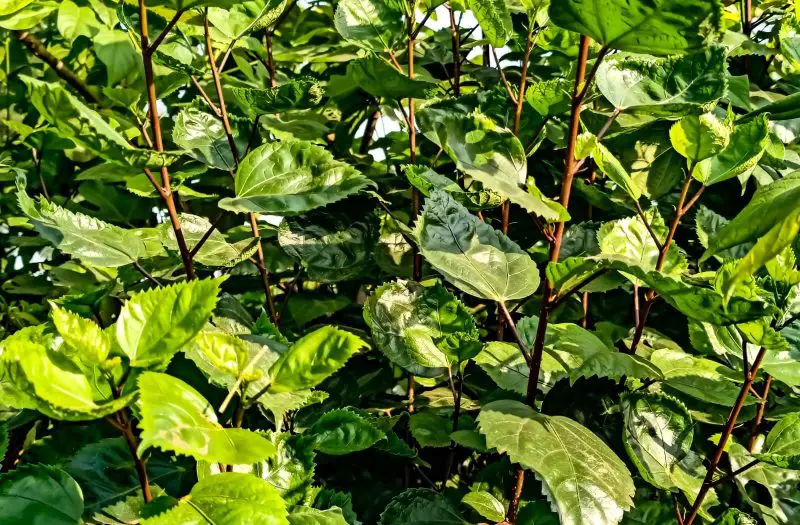
To fix a blooming issue, it is important to understand how hibiscus plants develop flowers. Hibiscus can be categorized into tropical hibiscus (Hibiscus rosa-sinensis) and hardy hibiscus (Hibiscus moscheutos). Tropical hibiscus blooms almost continuously in warm climates if given the right conditions, while hardy hibiscus generally blooms during the summer months. Both types need adequate sunlight, proper nutrients, and healthy root development to produce flowers.
The flowering process begins when the plant has enough energy reserves to switch from vegetative growth to reproductive growth. If any factor, such as light, temperature, or nutrients, disrupts this cycle, the plant will focus on growing leaves and stems instead of flowers. Knowing your hibiscus type and its specific blooming pattern will help you determine the best way to address the issue.
Improper Pruning and Its Effect on Flowering
Pruning is essential for maintaining a healthy hibiscus, but incorrect pruning can delay or prevent flowering. Tropical hibiscus produces blooms on new growth, so regular light pruning encourages branching and more flowers. However, heavy pruning at the wrong time can remove developing buds, causing the plant to skip flowering for weeks or even months. Hardy hibiscus, on the other hand, typically dies back to the ground in winter and grows new flowering stems in spring, so pruning old stems too early or too late may disrupt its natural cycle.
If you suspect pruning is the reason your hibiscus is not blooming, stop trimming for a while and allow the plant to recover. The best time to prune tropical hibiscus is in early spring before the active growing season, while hardy hibiscus should only be cut back after the stems have completely died in late fall or early spring.
Sunlight Requirements and Light Stress
Hibiscus plants love sunlight, and insufficient light is one of the most common reasons for a lack of blooms. Tropical hibiscus requires at least six hours of direct sunlight per day to produce abundant flowers, while hardy hibiscus can tolerate slightly less but still thrives in full sun. If your hibiscus is growing in too much shade, it will produce healthy leaves but very few buds.
To fix this, move potted hibiscus to a sunnier location or consider transplanting garden hibiscus to an area with better light exposure. If you live in a very hot climate, providing partial shade during the harsh afternoon sun can prevent stress while still giving the plant enough light for blooming. Light stress can also occur when hibiscus is grown indoors, so placing it near a bright south-facing window or using grow lights can help stimulate flowering.
Temperature Fluctuations and Environmental Stress
Hibiscus plants are sensitive to temperature changes. Tropical hibiscus thrives in warm conditions between 60°F and 90°F (15°C–32°C), while hardy hibiscus tolerates cooler climates but still requires warmth during its active growing season. Sudden drops in temperature, strong winds, or extreme heat can stress the plant, causing flower buds to drop before opening.
If your hibiscus is exposed to cold drafts or high winds, consider relocating it to a more sheltered spot. For potted tropical hibiscus, bring it indoors when nighttime temperatures fall below 55°F (13°C). Maintaining consistent warmth and avoiding drastic environmental changes will help the plant focus its energy on flower production.
Nutrient Imbalances and Over-Fertilization
Fertilization plays a crucial role in hibiscus flowering. Many gardeners unintentionally use the wrong type of fertilizer, leading to lush foliage but no blooms. Fertilizers high in nitrogen promote leaf growth rather than flower development. For optimal blooming, hibiscus requires a fertilizer with higher potassium and moderate phosphorus levels. A balanced hibiscus-specific fertilizer, such as 10-20-20, encourages bud formation and healthy flowers.
Over-fertilization can also damage the roots and disrupt the plant’s natural growth cycle. If you have been fertilizing too frequently, flush the soil with water to remove excess salts and reduce feeding. Fertilizing every two weeks during the active growing season is generally sufficient for potted tropical hibiscus, while hardy hibiscus benefits from monthly applications during spring and summer.
Watering Problems and Soil Conditions
Both underwatering and overwatering can prevent hibiscus from blooming. Hibiscus prefers consistently moist but well-drained soil. If the soil dries out too often, the plant will conserve energy for survival rather than flowering. Conversely, soggy soil can suffocate roots, causing stress and bud drop.
To ensure proper watering, check the soil moisture regularly and water deeply when the top inch of soil feels dry. Adding organic mulch around the base helps retain moisture and regulate soil temperature. Hibiscus also prefers slightly acidic soil with a pH between 6.0 and 6.5. If your soil is too alkaline, consider amending it with compost or sulfur to create optimal conditions for flowering.
Pests and Diseases Affecting Blooms
Pests such as aphids, spider mites, and whiteflies often target hibiscus plants, feeding on the sap and weakening the plant. This stress can prevent bud formation or cause buds to drop before opening. Fungal diseases, such as powdery mildew or root rot, can also interfere with nutrient absorption, reducing the plant’s energy for flowering.
Inspect your hibiscus regularly for signs of pests or disease. If pests are present, use insecticidal soap or neem oil as a safe treatment. For fungal issues, remove affected leaves and improve air circulation around the plant. Healthy, pest-free plants are much more likely to bloom consistently.
Plant Age and Flowering Patience
Sometimes, the lack of blooms is simply due to the plant’s age or stage of development. Young hibiscus plants, especially those grown from seeds, may take one to two years to start flowering regularly. Even established plants may experience a temporary pause in blooming after being transplanted or repotted as they adjust to their new environment.
If your hibiscus is young or recently moved, be patient and focus on providing consistent care. Once the plant establishes strong roots and adapts to its surroundings, it will naturally shift its energy toward flower production.
Reviving Hibiscus Blooming Fast
Once you identify the main reason your hibiscus is not blooming, you can take steps to encourage flowers quickly. Ensure the plant receives enough sunlight, maintain consistent watering, and use a fertilizer formulated for hibiscus with higher potassium content. Avoid over-pruning, especially during the active growing season, and protect the plant from temperature stress.
If your hibiscus has been stressed due to pests or nutrient imbalances, improving overall care may take a few weeks before new buds appear. For tropical hibiscus, once proper conditions are restored, you can often see buds forming within several weeks, while hardy hibiscus may take until the next growing cycle to bloom again.
Frequently Asked Questions
Why is my hibiscus growing leaves but no flowers?
This usually happens when the plant is receiving too much nitrogen, insufficient sunlight, or is experiencing environmental stress. Adjusting fertilizer and providing more light can encourage flowering.
Can I make my hibiscus bloom faster?
Yes, by ensuring proper sunlight, using a high-potassium fertilizer, and maintaining consistent watering, you can stimulate faster bud formation. Healthy tropical hibiscus often responds quickly to improved care.
Should I prune my hibiscus if it is not blooming?
Light pruning can encourage new growth and more flowers, but heavy pruning during the active growing season can remove flower buds. Prune tropical hibiscus in early spring and hardy hibiscus after winter dormancy.
How long does it take for a stressed hibiscus to bloom again?
If conditions are corrected, tropical hibiscus may start blooming again within four to six weeks. Hardy hibiscus may need to wait until its next natural blooming season.
Conclusion
If you have been wondering, “Why are my hibiscus not blooming and how to fix it fast?” the answer lies in understanding the plant’s needs. Adequate sunlight, proper fertilization, consistent watering, and protection from environmental stress are crucial for encouraging vibrant flowers. By identifying the cause and making simple adjustments, you can quickly restore your hibiscus to its full blooming potential, transforming your garden or patio into a colorful display of tropical beauty.

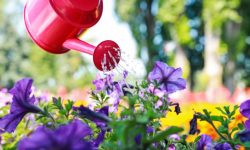
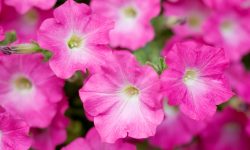
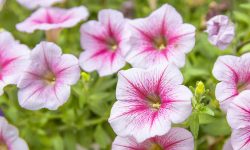
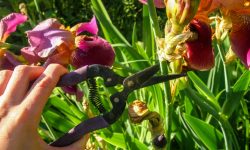
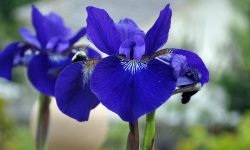
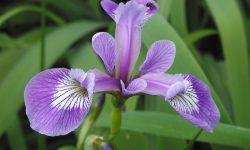
My hibiscus was moved 3 years ago & does not show any new shoots with the effect that a few flowers are produced on the main stems.
Any ideas?
Dear Tony,
I think you should check and try below suggestions:
1. Root Stress or Poor Establishment
When a hibiscus is moved, its roots are often disturbed. If the root ball wasn’t large enough or didn’t reestablish properly, growth can remain stunted.
What to do: Gently dig around the base to check for healthy roots (they should be firm and white, not black or mushy). Apply a root stimulator or a seaweed-based fertilizer to encourage new root growth.
2. Soil Conditions
Hibiscus prefers well-drained, slightly acidic soil rich in organic matter. Poor drainage or compacted soil can suffocate the roots, preventing new shoot development.
What to do: Improve soil drainage and mix in compost or organic matter around the root zone. Avoid overwatering — hibiscus doesn’t like “wet feet.”
3. Nutrient Deficiency
A lack of key nutrients, especially nitrogen, can lead to weak growth and fewer new shoots.
What to do: Feed your hibiscus with a balanced fertilizer (like 10-10-10) or one high in potassium and iron for flowering. Apply every 4–6 weeks during the growing season.
4. Pruning
If the plant hasn’t been pruned in years, it might not be stimulated to produce new shoots.
What to do: In early spring, prune back old wood to just above a node. This encourages branching and new shoot growth.
5. Light and Temperature
Hibiscus thrives in full sun (at least 6 hours daily). If it’s in a shaded or cooler location than before, it may produce fewer shoots and flowers.
What to do: Make sure it’s getting plenty of sunlight and is protected from cold winds if you’re in a cooler region.
Hope these guides above can help you to make your hibiscus reproduce new beautiful flowers soon.
forgot to say I have been using FB&B to feed it.